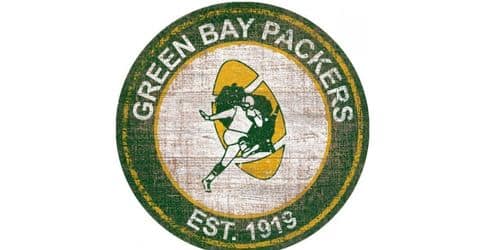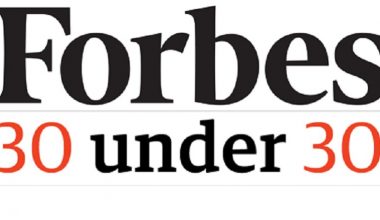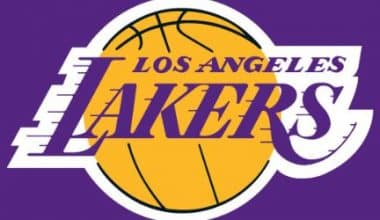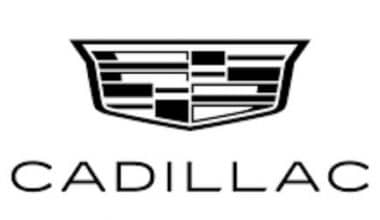The Green Bay Packers have been in the NFL for a long time. Since 1919, when the team was first formed, it has been based at Lambeau Field in Green Bay, Wisconsin. However, the team has won 13 league championships, including four Super Bowls, and twenty divisional championships. This article talks about the Green Bay Packers logo.
What are the Green Bay Packers?
The Green Bay Packers are one of the teams that compete in the National Football League (NFL) in the United States. The club was founded in 1919. The team currently competes in the National Football League’s North Division, calls Lambeau Field in Green Bay, Wisconsin, is its home stadium, and has Matt LaFleur as its head coach.
Overview
The Green Bay Packers are a professional football team in the National Football Conference (NFC). They are also a non-profit group. The team is based in Green Bay, WI.
As of 2015, there were 360,584 stockholders, which makes the club a publicly traded asset and gives it a special place in the public’s eyes. There is also a 4% “float” on the franchise. People and non-profits have paid for it this way for the past 100 years. Because of this, no one knows who owns the team, but the franchise makes money from the attention it gets from the public.
Earl “Curly” Lambeau and George Whitney Calhoun were fierce rivals and football fans. When Lambeau asked his packing company for uniform money, they gave him $500 to buy uniforms and equipment, but the deal was that the team would bear the name of the donor.
So, from 1919 to 1922, the captains were George W. Calhoun, J. E. Clair, and Earl Lambeau. In the second half of 1922, Lambeau was not the only owner. Gerald Clifford, Leland Joannes, Webber Kelly, and Andrew Turnbull also owned the team. This was how the franchise looked until 1935. After that, a company with the same name bought the rights to the franchise, and it became part of the public domain.
The company went out of business, changed its name to Acme Packing, went out of business again, and was only partly brought back to life after that. Green Bay Packers fans, on the other hand, were always happy about the team’s namesake sponsor and founder.
The Backstory
The 1960s Green Bay Packers logo wasn’t the first time the team tried to represent itself visually. The team went through four different logos before settling on the current one. They were all green, despite their differences in style and construction.
The new logo is a great example of how design and style have changed in recent years. The Green Bay Packers logo stands for things like professionalism, dignity, power, intuition, and the certainty that they will win.
By looking at different team logos, you can learn about the history of the Green Bay Packers. The team’s history starts with the words “YOU WANT IT, PACK IT,” “AP,” “ACME PACKERS,” “Green Bay, WI,” and “1921 FOOTBALL” written on a rectangle with rounded corners.
In 1951, the team got a logo that showed its new identity as a sports team. The name “Packers” was more important than the American football team’s logo. In 1956, they took the letters and put the ball in the spotlight.
The Packers have registered the “G” logo as a trademark and given licenses to the University of Georgia and Grambling State University, among others, to use it.
1921-1936
The ACME Packers football team began in 1921, and their first logo was bold, angular yellow letters with a thick green outline. The contrast between the lettering’s black shape and the rest of the lettering’s clean, straight lines makes the lettering seem bolder and more certain.
The first logo for the Green Bay Packers isn’t very stylish. On a white background, the logo has generic names in different fonts. The explanation says that the emblem stands for the company’s new name, which is Acme Packing. It looks like a logo patch for a brand of clothes called “Cheron.” It has the shape of a long rectangle with rounded corners. The white area in the middle has two thin black stripes around it.
There are two “A”s and a “P” that have crossed over each other in the middle of the emblem and its meaning, which is the name of the company that sponsors it. The wordmark “Acme Packing” is gold, and the capital letters are dark blue with a gold outline. Below is a city, a state, and the year 1921. In the top right corner of the logo is the phrase, “You want it, we’ll pack it.”
1937 — 1955
When the team changed its name to the Green Bay Packers in 1937, its new logo was the now-iconic square, bold “GB.” The letters are in a geometric font. The “G” shape has a horizontal font, and the “B” shape has a smaller font. The bodies of the letters in the new logo were dark blue, and the edges were light gray.
1951 – 1955
Around this time, the Green Bay Packers logo and the color green became almost synonymous. The image of a football with a yellow outline and two orange goalposts says the people who made it, stand for power, greatness, the desire to win, and tenacity. Under the logo, the wordmark “Packers” is written in big letters, with the first letter capitalized. As a background, there is a big, complicated football with two white stripes and lacing. All around us is empty white space, which makes it seem like there are endless possibilities.
1956 – 1961
In 1955, the Green Bay Packers were in need of a new look, so they got one. The silhouette of Wisconsin State was green on a yellow background on a football that was standing up. The football player stands in front of a green background while holding a yellow ball. He is wearing a yellow outfit with green accents. Even though the logo is well-known and loved, it was only on the club’s clothes for six years.
When it was first used in 1956, the logo was a quarterback wearing No. 41 over a yellow football. He gets into his throwing position and gets ready to throw. The background is the green state of Wisconsin. Green Bay has a green star inside a white circle.
The helmet, socks, and shirt number are all white, and the uniform is yellow. A second football is also part of the design. The designers added important details to show how important American football is to the people of Wisconsin.
1961 – 1979
This Packers logo was made from scratch. The logo is an oval English letter “G” that looks like a football. When Lombardi asked the Packers’ equipment manager, Gerald “Dad” Braisher, to make a logo, he asked for this detail. John Gordon, who was an art major at St. Norbert College, was given the work by Braisher. The two men finished the change by painting a white “G” on a green football shape. They then took it to Lombardi, who approved it.
1980 – Present
In 1980, they had to change the Green Bay Packers’ name. It’s possible that 1961 is the true year of the creation of the emblem, featuring a white letter “G” on a dark oval background. The redesign was done when a wide yellow line was drawn around the oval. This took 19 years.
The first logo was made by Gerald “Dad” Braisher and John Gordon, who worked for him and were students at St. Norbert College at the time. They came up with the idea for the famous “G,” gave it shape, and worked out the details.
Shape
The main Green Bay Packers logo is the same as the old one: a white “G” on a green oval background. A yellow border is the only difference. Since this logo is on the helmets of the players, it is likely that it was included.
The Emblem’s Font and Colors
The team focused on its name until 1955, but in the 10 years after that, it changed its approach. In 1956, artists had to create paintings of soccer balls. The image went through many changes before becoming a stylized G. At first glance, he appeared trustworthy. On the back, there was a picture of the Wisconsin state seal and the player’s jersey number, 41.
The symbol has changed in a very big way. The ball is still there, but it looks different now. The dark green oval with a yellow border is a dead giveaway. Also, the “G” in the middle is in a round form.
The people who made the latest logo decided to make their own “G” instead of using a font that already existed. They didn’t start with a blank page; instead, they used a piece of chopped typeface to make sure that each letter had the right size. The palette’s colors all go well together. They had enough contrast because the white blends into the dark green. In the 1980s, yellow stripes were popular as a bold accent color in the 1980s.
How the Green Bay Packers Have Looked Over the Years
Here’s a look at how the Green Bay Packer uniforms have changed over the years;
Blues
On August 11, 1919, Curly Lambeau and George Whitney Calhoun got together to start the Green Bay Packers. Lambeau went to the Indian Packing Company and asked for money to buy uniforms. In exchange for naming rights, the owner of the restaurant at Lambeau Field, Frank Peck, gave the team $500 to help pay for its uniforms and equipment. The “Green Bay Packers” have the oldest team name in the NFL. This is because they are still based in the city that gave them their name, Green Bay, Wisconsin.
In 1920
The Indian Packing Company was bought by Acme Packing Company in 1920. After its first year in the NFL, Lambeau’s team wore jerseys that said “ACME PACKERS” to show that Acme was still behind them.
Lambeau, who went to Notre Dame, got the idea for his team’s navy blue and gold colors from the Fighting Irish, just like George Halas did when he started the Chicago Bears with the school’s colors. In the 1930s and 1940s, the Packers sometimes wore green and gold, just like the Irish did. After that, they went back to their traditional blue and gold.
Early Packers fans often called them the “Bays” or the “Blues” (and sometimes they were even nicknamed “the Big Bay Blues”). In the 1920s, Lambeau thought about changing the name of the team from the Packers to the Blues. Yet they didn’t use any of the names.
In 1949, the Packers changed their color scheme and got rid of the Lambeau. Navy blue was kept as a secondary color and mostly used for sideline capes, but it was soon taken off the official list of team colors without being too noticeable.
The Gold And Green
When Lambeau left, the “New Packers” showed off their first official logo, which was the words “Packers” written in green and a football between two goal posts. In 1950, the symbol would also be on share certificates. Over the next four years, the team would try out different uniform color schemes. The switch to hunter green and “mustard” yellow as the official team colors became official when Coach Gene Ronzani said, “We are the Green Bay Packers.” Because the team’s colors are green and gold, Packers fans often call the team “The Green and Gold.”
In 1954
In 1954, when the Packers hired Lisle Blackbourn as their new coach, they wanted to start over. The team came up with a new logo and a new set of clothes. The logo was a yellow football on top of a silhouette of Wisconsin with the number 41 on it. In the state, there were also marks for Green Bay and Milwaukee. Twenty years ago, both Arnie Herber and Clarke Hinkle wore the number 41 on their jerseys.
Another version of the logo, with a yellow and green “GB” that fit together, also came out that year. It was on coaches’, equipment managers’, and trainers’ sideline caps, shirts, and jackets. After Lombardi left the team, coaches like Phil Bengston and Dan Devine wore the logo.
Lombardi’s Time: 1959–1968
On February 2, 1959, the Green Bay Packers hired Vince Lombardi to be their head coach and general manager. Lombardi asked that the team’s uniform, logo, and color scheme be changed. Every color of sock had a three-stripe pattern that was easy to spot. The layout we have now is still in use, and all players wear the same cleats.
In 1959, the Packers’ equipment manager, Gerald “Dad” Braisher, was asked by Lombardi to come up with the oval logo. It would be the first and only logo on the team’s helmet, which came out that year. Since its start in 1961, the team has had many different logos, but only the “G” has ever been on the helmet. The Packers have a trademark on the logo, but the University of Georgia and Grambling State University can use it with some restrictions.
In 1964
Even though they didn’t use the Georgia “G” until 1964, it looks more like the “G” that the Packers used in the 1960s. Vince Dooley, who used to be the head coach of the Bulldogs, thought it would be smart to get the Green Bay Packers’ permission before using Georgia’s new logo. In 1961, the Packers unveiled the main logo that would be used on all of the team’s official print and digital materials.
The logo was based on the Wisconsin football team’s logo from 1954, which also had a Wisconsin silhouette with a yellow football in it, but the running back wasn’t numbered. With this logo, the Packers have won five Super Bowls and the NFL title.
In 1969, when Lombardi left the Packers and joined the Redskins, the “G” on the helmet became the team’s emblem. The symbol became a backup logo even in the 1970s.
Changes: From 1969 to 1996
When Lombardi left the Packers, they didn’t change their uniforms much for another 15 years. In 1969, when the NFL was celebrating its 50th season, all of the teams wore a special patch on the top of their left shoulders. However, in 1970, the league told all teams to put the last names of their players on their jerseys.
In 1984
In 1984, when Forrest Gregg took over as head coach, the uniform changed the most since Lombardi’s time. There is now gold on the middle stripe of the pants, the “G” logo floats on the sleeve stripes, and the numbers on the hips are closer together. They didn’t remove the “TV numbers” from the broadcasts until Gregg left office in 1988.
Many National Football League teams wear white jerseys for their first home games of the season so they don’t get too hot. The Packers have only done this twice, for the first two games of the 1989 season.
In 1993, to mark the team’s 75th year, the Packers wore a patch on the upper left chest of their uniforms. A year before the NFL’s 75th anniversary season, this event was held. When the NFL started wearing throwback uniforms in 1994, the Packers wore them for a few road games. In 2001 and 2003, when the Packers played the Detroit Lions on Thanksgiving, they wore throwback uniforms from the 1930s and 1960s (which were only slightly different from the current uniforms).
Since 1997 Till Today, Patches Have Been Worn on the Uniform and at Lambeau Field
In 1997, for the first time since Lombardi’s 1958 team, the Packers wore a uniform with three stripes on each sleeve.
In 2003, the first game at Lambeau Field after repairs wore a “Rebirth of a Legend” patch. However, in 2007, the Packers wore a patch commemorating Lambeau Field’s 50th anniversary. In 2010, throwback uniforms made their home debut. When the Packers changed their name in 2021, they changed their logo in a big way. Plus, they got brand-new uniforms from the 1970s.
Green Bay Packers Logo
Green Bay is the home of a professional American football team. The Packers play in the NFL every season. Since 1919, the team has been around, making it the third-oldest in the NFL. It is also the only major league sports team in the United States that is not a for-profit corporation. Lambeau Field has hosted Green Bay Packers home games since 1957.
The Packers are the only “small-town team” left in the NFL. These teams were common in the league’s early years (the 1920s and 1930s). Earl “Curly” Lambeau and George Whitney Calhoun began the franchise in 1919, but you can still trace it back to semi-professional teams in Green Bay as early as 1896. In 1919 and 1920, the Packers played in the semi-pro Wisconsin State Football League. However, in 1921, they joined the American Professional Football Association (APFA), which was the league before the National Football League.
In 1993
Even though the Packers have lived in Green Bay since 1995, the Milwaukee area is still considered a home media market for the team because of how long the franchise has been there (beginning in 1933). Forbes ranked the Packers as the 27th most valuable sports team in the world in 2019 with a value of $2.63 billion, even though they play in the smallest major league professional sports market in North America.
Find out more.
The Packers are the only NFL team to have won 13 championships. This includes nine NFL championships that came before the Super Bowl and four Super Bowl wins. The Packers won the first two Super Bowls in 1966 and 1967. Before the AFL and NFL merged, they were the only NFL team to beat an AFL team. Vince Lombardi was the head coach of the Green Bay Packers when they won their first two Super Bowls. The trophy honors him because it has his name on it. Even though they’ve made the playoffs 22 times since 1993, they’ve only won the Super Bowl twice: in 1996 under coach Mike Holmgren and again in 2010 under coach Mike McCarthy.
The Packers also have the best regular season and postseason record (80-4) and the best win percentage in NFL history (.571). Usually, the Packers have played against the Bears, Vikings, and Lions in the NFL’s NFC North division (formerly known as the NFC Central Division). They are one of only three teams in NFL history, along with the Kansas City Chiefs and the Dallas Cowboys, to have won at least 100 games against each of those teams. The Bears and the Packers have been rivals since 1921, making it one of the longest-running rivalries in professional sports in the U.S.
The Team History
Here are some facts about the Green Bay Packers logo team below:
Founding
On August 11, 1919, Earl “Curly” Lambeau and George Whitney Calhoun came up with the idea for the Green Bay Packers. With the help of the Indian Packing Company, Lambeau was able to acquire funds to purchase new uniforms. A $500 donation was made to him for uniforms and equipment, but the team had to be named after the donor. So, Lambeau and Calhoun named their team the “Packers.” The “Green Bay Packers” is the oldest team name still in use in the NFL. It was the team’s original name, and Green Bay is its home city.
The new national pro football league began the year before, and on August 27, 1921, the Packers got a franchise. The team had money problems and lost its franchise within a year, but Lambeau found new investors and got the team’s rights back the next year. The Green Bay Football Corporation was started by a group of investors called the “Hungry 5.”
About Their Matches
Super Bowl I
When the NFL and AFL decided to join forces at the end of the 1966 season, the Super Bowl era began. Under head coach Vince Lombardi, the Packers had the best record in the NFL at the end, going 12–2. When the Packers were ahead 34–27 against the Dallas Cowboys in the NFL Championship Game, the Cowboys had the ball on the Packers’ 2-yard line and were trying to tie the game. On fourth down, when the Packers were about to lose to Dallas, Tom Brown picked off a pass from Don Meredith in the end zone.
The Packers went on to win the championship after beating the Kansas City Chiefs 35–10 in Super Bowl I. Max McGee got the first touchdown, which was scored from 37 yards away. When Green Bay scored three touchdowns after halftime, the game was over. Bart Starr threw for 250 yards and two touchdowns, which made him the most valuable player of the Super Bowl.
Super Bowl II
After the 1967 season, Vince Lombardi’s time as the Packers’ head coach was over. As payback for losing to the Los Angeles Rams during the regular season, they beat them 28–7 in the Western Conference Championship Game (the only playoff game played at Milwaukee County Stadium). Lambeau Field in Green Bay, Wisconsin, is notoriously cold in January, so the NFL Championship Game between the Green Bay Packers and the Dallas Cowboys is sometimes called the “Ice Bowl.” In the coldest game in NFL history, Bart Starr’s touchdown on a quarterback sneak gave the Packers a 21–17 win and their third straight NFL title.
The Green Bay Packers beat the Oakland Raiders by a score of 33–14 to win their second Super Bowl. The Packers got on the board when Don Chandler kicked two field goals. Then, Bart Starr threw to Boyd Dowler for 62 yards and a touchdown, putting the Packers ahead 13-0. Herb Adderley scored the first point for the defense when he picked off the ball and ran it back 60 yards for a touchdown. Starr has won Super Bowl MVP for the second year in a row. He threw for 202 yards and a touchdown and also ran for 14 yards.
Super Bowl XXXI
The Green Bay Packers won the Super Bowl for the first time in over 30 years in 1996. The Packers finished the regular season with a 13-3 record thanks to the play of quarterback Brett Favre and defensive end Reggie White, who won the NFL MVP together. The Packers beat the 49ers 35-14 in the “Mud Bowl,” and they beat a second-year team, the Panthers, 30-13 in the NFC Championship Game to get to the Super Bowl.
In the end, the Packers beat the Patriots by a score of 35-21 to win Super Bowl XXXI. Andre Rison caught a touchdown pass from Brett Favre that went for 54 yards, and Antonio Freeman caught another one that went for 81 yards. After the Patriots got within six points of the Packers, Desmond Howard’s kickoff return for a touchdown helped the Packers pull away from them. Howard was the first player from any team’s special teams to win Super Bowl MVP. He had 244 all-purpose return yards. Reggie White had the most sacks in the game with three, and the Packers’ defense set a Super Bowl record with four interceptions.
Super Bowl XLV
The Packers ended the season with a record of 10-6, which gave them the #6 seed in the NFC playoffs. The Packers would have to go on the road and beat the Eagles (21-16) and the Falcons (48-21) to get to the NFC Championship Game against the Bears at Soldier Field. This would be only the second playoff game between the Packers and the Bears, two teams that have been rivals for a long time (the other game being a 33-14 Bears victory in 1941). The Packers beat the Bears 21–14, and they will now play in Super Bowl XLV.
The Green Bay Packers beat the Pittsburgh Steelers in Super Bowl XLV, which was played in front of a sold-out crowd at Cowboys Stadium. This was the Packers’ 13th world title and fourth Super Bowl win. The first points came on a 29-yard pass from Aaron Rodgers to Jordy Nelson. On Pittsburgh’s next drive, safety Nick Collins stole the ball and ran 37 yards to score a touchdown. The Packers only needed Aaron Rodgers to throw two more touchdown passes to Greg Jennings, and their defense stopped Pittsburgh’s last drive with a four-and-out. Aaron Rodgers was named the Super Bowl MVP because he threw for 304 yards and three touchdowns.
What Does the G Stand For on Packers Helmet?
It may look like the “G” in the oval logo stands for “Green Bay,” but it actually stands for the word “Greatness.” The Packers have registered the logo that equipment manager George Braisher made for the team in 1961 as a trademark.
Why Is the Packers Logo Just AG?
Almost everyone thinks of Green Bay when they hear the letter G. When the logo was first thought of and approved, the G was chosen to stand for “Greatness.”
In 1961, the team’s equipment manager, who worked for famous coach Vince Lombardi, made the Packers’ helmet logo. He decided that the “G” should stand for “Green Bay,” and that the shape of the logo should look like a football.
Does the G on the Packers’ Helmet Stand for Greatness?
On the media day before Super Bowl XLV, Tiki Barber, a former NFL running back, made up a story that the letter G stood for “greatness.”
What Is the Flap on Top of Football Helmets?
A Guardian cap is a hard shell that goes over a helmet to protect it. This is the latest thing the NFL has done to make sure its players’ heads stay safe.
This part, called a “cantilever,” makes the helmet more flexible without changing the way it is built. Heavy padding on the back of the moveable part prevents it from moving too much, but it does move enough in an area where players can be hit hard.
Who Had the Original G Logo?
The public owns the Packers, which are the only team in the National Football League. As of the end of 2022, 537,460 investors own them instead of the company itself, the sole owner, or a partnership.
In 1961, the team’s equipment manager, who worked for the famous coach Vince Lombardi, made the Packers’ helmet logo. He decided that the “G” should stand for “Green Bay,” and that the shape of the logo should look like a football.
What does the Green Bay Packers Logo Mean?
The Green Bay Packers have a sleek and simple logo that is based on a stylized letter “G” that has been stretched horizontally. This letter is the first letter of the club’s name and serves as the primary signifier for the team. The club’s determination, power, and energy are reflected in the distinctive contours of the letter and the intense color palette of the badge.
Where did the Green Bay Packers Logo Come From?
Gerald Brashier and John Gordon were responsible for the design of the very first iteration of the current Green Bay Packers logo, which debuted at the very beginning of the 1960s. Gordon was a well-known graphic designer who took the ideas of the club manager, Brashier and transformed them into a graphic symbol that has since become well-known over the course of many years. Brashier was the manager of the club and the person who came up with the initial concept.
When Did the Packers Change From Blue to Green?
The Green Bay Packers sported a badge with blue and gray colors for more than a decade, beginning in 1937 and continuing until 1951, when it was succeeded by a badge with green and orange colors. After Curly Lambeau left the club, the club decided to hold this redesign event. Therefore, the Packers’ transition to a new color scheme has a double meaning for them.
Why Do the Packers and Georgia Have the Same Logo?
The shape of the UGA logo is not an exact duplicate of the shape of the Packers logo, but the Packers logo served as inspiration for the design of the UGA logo, and the two logos are similar enough that UGA AD Joel Eaves requested permission from the Packers to move forward with the red and black oval G design. That was in the year 1963. Later on, Grambling State University was also given permission by the team to use the Packers’ logo.
What Is the Difference Between the Packers and Georgia Logo?
The Georgia G, which was designed in 1963, is a little bit more svelte than the G that the Packers use. Since then, it hasn’t been changed at all, in contrast to Green Bay’s logo, which got a minor makeover in 1980 when it got a gold border. Therefore, stop pointing the blame, Packers fans. Georgia did not copy the Green Bay G, and even if they had, Green Bay would have allowed it. Georgia did not copy the Green Bay G.
Conclusion
In 1921, the Green Bay Packers joined the American Professional Football Association (APFA), which was similar to the NFL. The Green Bay Packers are the oldest team name still in use in the National Football League (NFL). But they are the third-oldest club in the NFL (based on their nickname and the fact that they have stayed in the same city). The team is led by head coach Matt LaFleur. They also play very well.
Related Articles
- MOVING COMPANIES: Top Best Companies In 2023(Update)
- NFL LOGO: Meaning, Evolution, and History
- GREEN MARKETING: The A-Z Guide (+ Practical Examples)
- Top Email Marketing Platforms: 15+ Best Picks For 2023 (Updated!!)
- TAMPA BAY BUCCANEERS LOGO: Its Original Name and What Changed From the Logo






